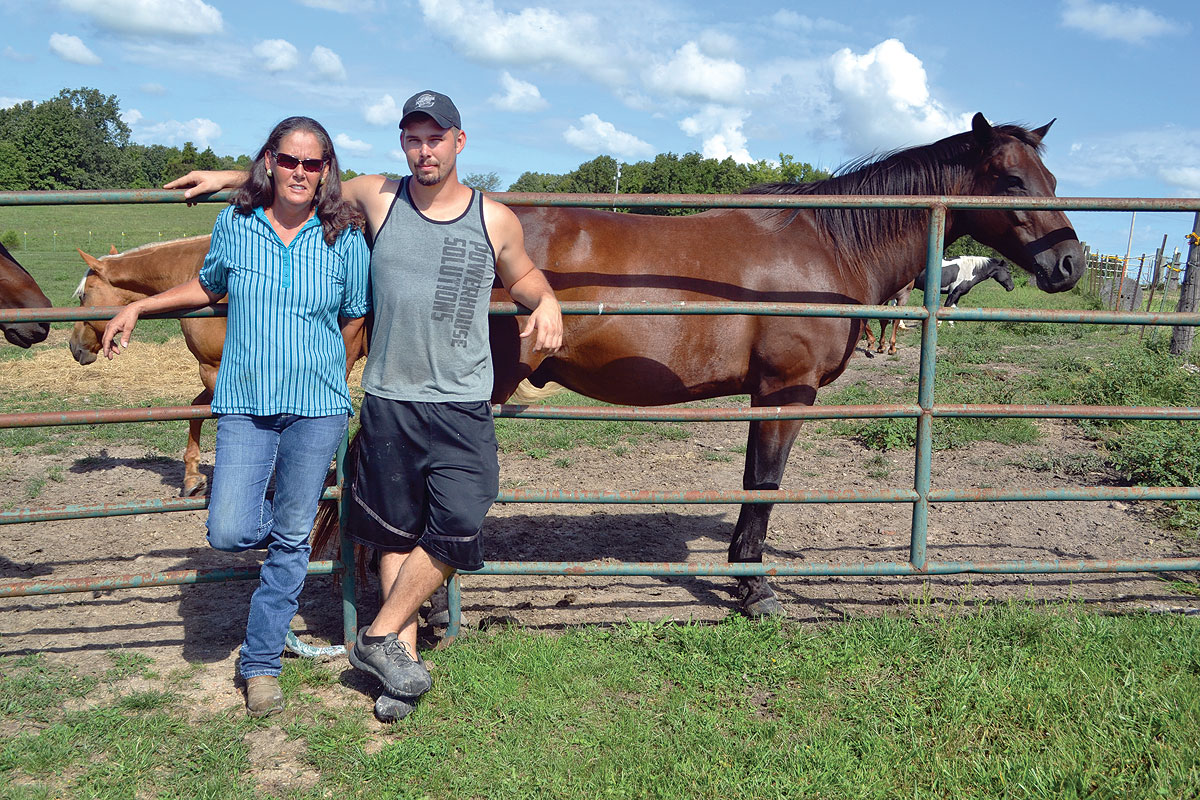
Red Angus and bison roam the Chip McGeehan ranch
When Chip McGeehan of rural Webster County, Mo., graduated from the University of Missouri-Columbia with a degree in forestry, fisheries and wildlife, he didn’t imagine he would instead embark on a career in business. Always a hunting and fishing enthusiast, he was duck hunting with a friend in Tennessee, who had just started into business with McDonald’s and he told Chip, “you would love this.”
“I discovered I loved sales,” he quipped, relaxing at his home on his Webster County cattle and buffalo ranch of 1,000 acres. Today, he and his wife, Teresa own 16 McDonald’s restaurants in 14 southwest Missouri communities, stretching from Eldon to Nixa.
Still, the call of the wild in the Ozarks never let Chip go. He was cutting hay for Pat Jones, former owner of Marshfield’s Exotic Animal Paradise, when the opportunity to purchase land came up. It was some time after that, Pat convinced Chip to take some buffalo in exchange for another hay cutting.
Today, Chip has approximately 60 head of bison, the proper term for the North American animal mistakenly referred to as buffalo on this continent, and 60 registered Red Angus.
“As with any breed, the end goal is to improve the genetics,” he said. “Everybody has cattle, but not everyone has bison and there are some significant differences.
“Bison are not a domestic animal, like cattle. They are still genetically, a wild animal and can stand alone if there is 3 foot of snow on the ground. Not so for cattle. Like deer and elk, they come into rut once a year whereas cattle cycle every 21 days. Cattle will stay put for the most part, if the fences are good but buffalo won’t be stopped by electric or wire, if they’ve a mind to go. Their attitude is, if they can see through it, like a fence, they can go through it.”
While related, cattle and bison are very different.
“Bison don’t mature as fast as cattle. It takes 30 months to get a bull to maturity or an animal ready for slaughter, while cattle are ready at 18 months of age. There are only 280,000 head of bison in all of the United States. There are 250,000 head of cattle slaughtered daily in the U.S. so theoretically, you could slaughter all of the bison in the country in one day. That puts a higher demand on the buffalo meat which is why it goes for $6.50 a pound, rather than the $4 a pound you get for high quality beef.”
While he may have never imagined, once leaving his college classes related to animal husbandry and genetics behind for the world of restaurant management years ago, that knowledge came back to him in his ranch and land management work.
“We work with intensive grazing, with both the cattle and the buffalo, but we don’t mix the two as it is not in their best interest. A bison can kill a cow in short order if it wants to. We use a feed truck with range cubes to get the buffalo moving and soon, like the cattle, they are excited about moving to a new pasture every few days. It really helps with the control of parasites as they die off every 21 days and we move them through different pastures every seven days. Of course, the challenge is to get them moving in the summer when there is great grass everywhere.”
Chip has remained actively engaged in his favorite pursuits of hunting and fishing, but he has gone far beyond the average sportsman’s passion. He served as a Missouri Conservation Commissioner from 2005 to 2011, working in the department’s elk restoration program. He is a lifetime member of the Conservation Federation of Missouri and continues to serve on its board of directors.
“When we first came here, it was so weedy, but we’ve also worked to change our own landscape right here at home. Back then, you never heard a bird but now we have six to eight coveys of quail on our own land. We are truly fortunate and blessed to live here.”






